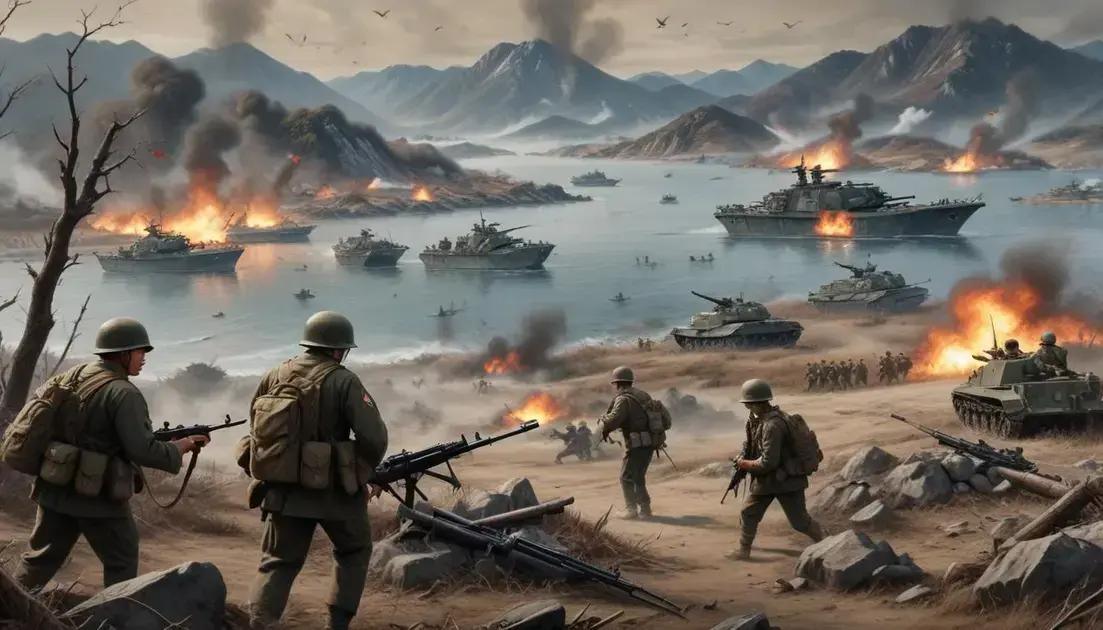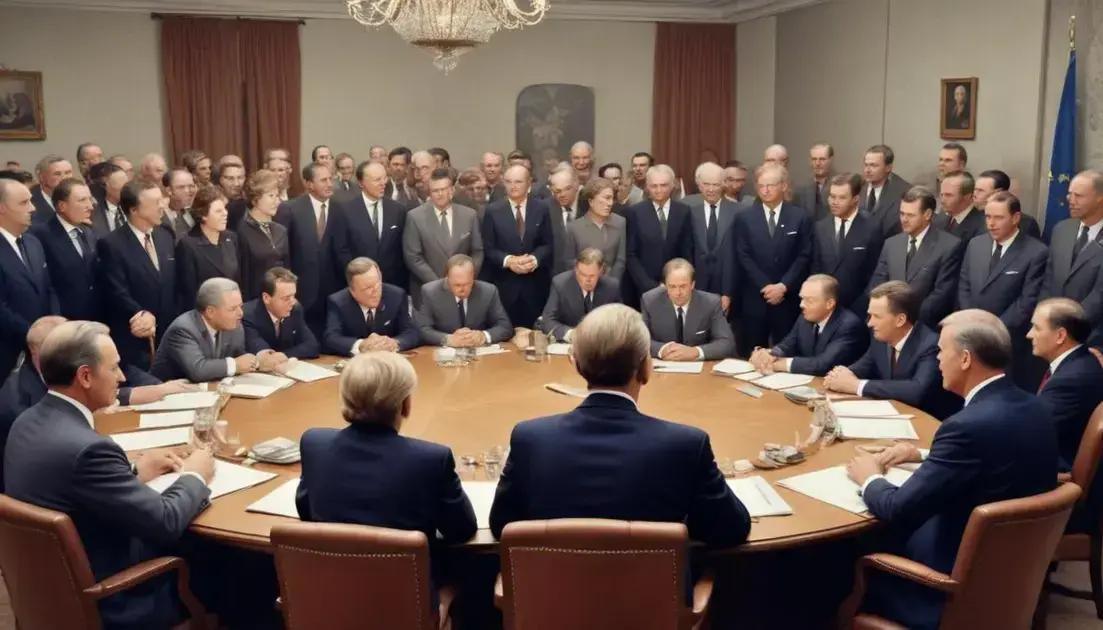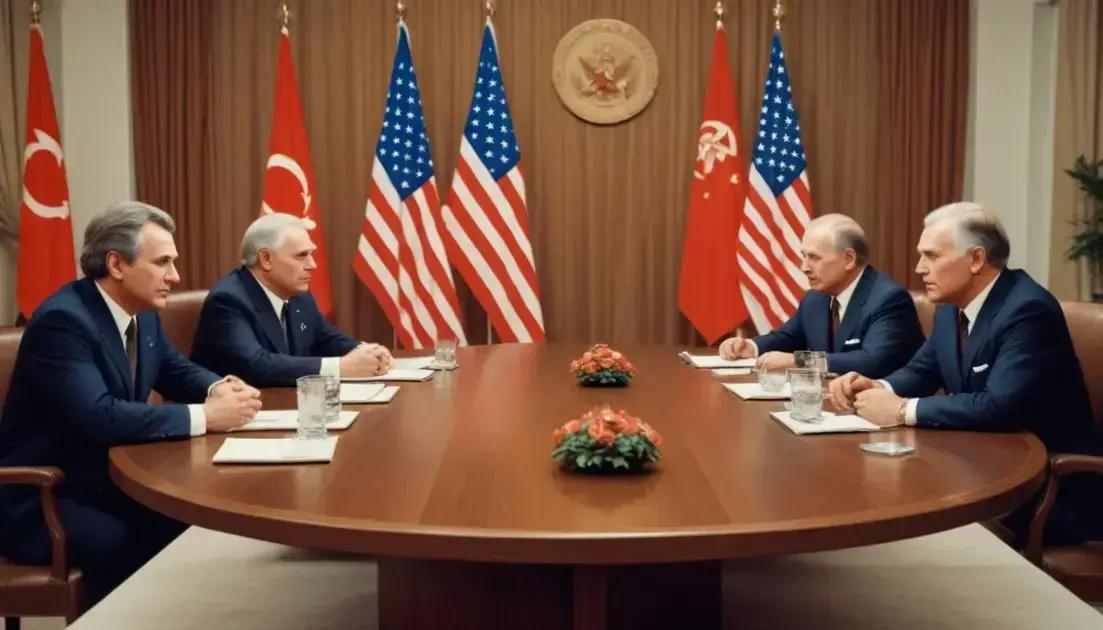
Korean War: Division, Conflict and Permanent Tension
The Korean War marked a significant moment in history, highlighting the struggle between communism and democracy. Following the war, tensions between North and South Korea have persisted, as both nations stand divided along the DMZ. Despite the cease-fire in 1953, ongoing hostilities and military buildups continue to define the region. The war’s aftermath has left a lasting impact on international relations and shaped policies surrounding nuclear developments. Understanding this conflict is crucial to grasping the complexities of modern geopolitics.
Korean War was not just a conflict between two nations; it reflected the intense geopolitical struggles of the time. Curious about how it shaped today’s world?
Origins of the Korean War
The Korean War traces its roots back to the end of World War II. When Japan surrendered in 1945, Korea was divided into two zones. The United States took the south, while the Soviet Union controlled the north. This split was never meant to be permanent.
As the Cold War began, both superpowers tried to shape Korea in their image. In the north, a communist government formed under Kim Il-sung. In the south, Syngman Rhee led a pro-Western government. The differences between these two sides quickly grew.
Growing Tensions
By 1950, tensions were high. Both leaders wanted to unify Korea under their own systems. Skirmishes along the border were common. Each side blamed the other for this violence. These conflicts set the stage for a larger war.
The Invasion Begins
On June 25, 1950, North Korea invaded South Korea. This move shocked the world and violated international law. The United Nations quickly responded, condemning the invasion and sending troops to support South Korea.
The early days of the war saw North Korean forces advance rapidly. They captured Seoul just days after the invasion. It seemed that South Korea might fall quickly.
International Reactions
Countries around the globe reacted differently. The U.S. saw the invasion as a threat to democracy worldwide. They committed troops to stop the spread of communism. Meanwhile, China and the Soviet Union supported North Korea. This set the stage for a fierce conflict.
The Korean War was about more than just two nations. It was a part of the larger struggle between communism and democracy during the Cold War. Understanding these origins helps us see why the war was so impactful.
Major Battles and Events
The Korean War had several key battles that shaped its outcome. Each battle told a story of bravery and strategy. Knowing these events gives us a clearer picture of the war.
One of the first major battles was at Pusan. The North Korean army pushed the South Koreans back. They faced danger but fought hard to hold their ground. The United Nations forces arrived to help push back.
The Incheon Landing
In September 1950, General MacArthur led a surprise attack at Incheon. This landing changed the tide of the war. It allowed UN forces to retake Seoul. The operation was risky, yet it was a big success.
The Battle of Chosin Reservoir
In late 1950, UN forces faced harsh conditions at Chosin Reservoir. They were surrounded by Chinese troops. Despite this, they fought bravely, making a fighting retreat. This battle is remembered for its fierce cold and heroism.
The Stalemate at the 38th Parallel
By the summer of 1951, fighting turned into a stalemate. Both sides dug in along the 38th Parallel. Here, they built strong defenses. This situation led to long, hard years of trench warfare.
During these years, battles like the fight for Pork Chop Hill happened. Both sides suffered heavy losses. It showed how stubborn both troops were in their fight.
Major battles of the Korean War are key to understanding the conflict. They reflect bravery and the challenges faced by soldiers on all sides.
Impact on the Cold War
The Korean War had a major impact on the Cold War, shaping how countries viewed each other. It was not just a fight between North and South Korea. Instead, it was part of a global struggle between communism and democracy.
After the war, the divide in Korea became a symbol of the Cold War. The United States saw the conflict as a chance to stop the spread of communism. They supported South Korea with troops and resources.
Military Alliances Strengthened
The Korean War led to stronger military alliances. NATO countries rallied around the U.S. to support their efforts. Countries like Japan and Australia also increased their military ties to the West. This made the Cold War tensions even higher.
Domino Theory
Many leaders discussed the domino theory, believing that if one country fell to communism, others would follow. The U.S. wanted to prevent this spread in Asia. Therefore, they became more involved in conflicts around the globe.
Increased Military Spending
The war also led to increased military spending. The U.S. ramped up its military capabilities. This included new weapons and technology. The focus was on being ready for any threat from communist nations.
In essence, the Korean War was a flashpoint during the Cold War. It changed how countries interacted and built alliances. Its effects are still felt today, showing how past conflicts shape our world.
Aftermath and Ongoing Tensions
The aftermath of the Korean War left deep scars. The fighting ended in 1953, but peace was never fully achieved. Instead, a fragile armistice was signed. This created a tense cease-fire, but no formal peace treaty was ever made.
This situation led to ongoing tensions between North and South Korea. Both sides built strong military forces along the DMZ, or Demilitarized Zone. This area became one of the most fortified borders in the world.
Continued Hostilities
Since then, skirmishes have broken out from time to time. Both nations remain on high alert. Each side accuses the other of threats, which keeps the fear of war alive.
Global Impact
The test of nuclear weapons by North Korea raised alarms. Many countries, including the United States, worry about the potential for conflict. These tests are seen as direct challenges to international peace.
Efforts for Reconciliation
Many efforts have been made to restore dialogue. These include summits and talks aimed at reducing tensions. However, these negotiations have often broken down. Distrust runs deep on both sides, making progress tough.
In recent years, North and South Korea have shown some willingness to talk. Events like sporting competitions have helped ease tensions, even if temporarily. Ongoing dialogues show hope but also highlight challenges.
The aftermath of the Korean War is complicated. While formal hostilities may have ceased, the tensions persist. Understanding this history helps explain the current state of affairs.
Conclusion
In conclusion, the Korean War significantly shaped global relations and continues to affect the world today. The conflict highlighted the struggle between communism and democracy. It created lasting tensions that still exist on the Korean Peninsula.
Despite the cease-fire in 1953, peace remains elusive. Both North and South Korea maintain strong military forces along the DMZ. Efforts for dialogue and reconciliation show some progress, but mistrust lingers between the two sides.
The ongoing issues demonstrate the need for continued international focus and support. Understanding the impacts of the Korean War helps us recognize the complexities of the situation today. Ultimately, a lasting peace must involve cooperation, dialogue, and a genuine effort to bridge the divides that still separate the two Koreas.


